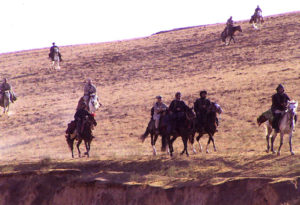The Syrian conflict

The Syrian Civil War (2011-present) has been a test of our current world order, much in the same manner that the Spanish Civil War (1936-1939) was before World War Two. In both cases, diplomacy and the international organizations proved unable to stem the violence. The two conflicts are also similar in that each has revealed the fissures of the modern global era, and quickly devolved into a proxy conflict. In both cases foreign fighters flocked to the battlefront for ideological reasons. The international volunteers in Republican Spain’s International Brigades (as well as the mostly Communists and anarchists in the POUM militias) have their Islamist parallels in the Syrian civl war. While their ideologies were completely different, in each case you saw young people streaming to the battlefield not because they had been sent by a state, but rather because they felt a sense of duty to a cause. In Spain, the nationalist leader Franco welcomed foreign units from France, Germany, Italy and Morocco, which perhaps parallels how states such as Iran and Russia have sent support to Bashar al Assad in modern Syria.
Of course there are differences in the two wars. After the Spanish Civil War most foreign combatants were welcomed home. Perhaps the key difference, however, in the struggle has been that in Syria a major non-state actor -Hezbollah- has proven to be a key and unified power on the battlefield. Still, even a cursory comparison of the two conflicts leads to a strange feeling of deja vu.
This similarity extends to the realm of military affairs. Much like the Spanish civil war, the Syrian conflict has also proved to be a test of modern military equipment and tactics. In both conflicts external actors lent aid not only to support their allies, but also to test their systems. In the 1930s it was Germany that drew the key lessons from the battles in Spain, particularly regarding the role of close-air support. Western democracies did not pay similar attention to how technology had changed warfare (especially Britain and France), which proved to be a major mistake. In the case of Syria, Hezbollah has made immense progress in urban warfare tactics, while Russia has used the conflict to display its naval and air capabilities. Together with the Iranians, the Russian intervention has changed the course of the war. There can be little question now that the momentum now is with the Syrian regime to such an extent that President Assad can aspire to reclaim control over the entire nation, with the possible exception of the Kurdish region. This is a dramatic change from the state of affairs even two years ago. …



